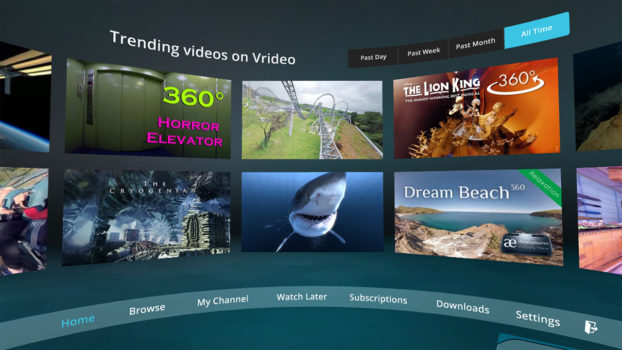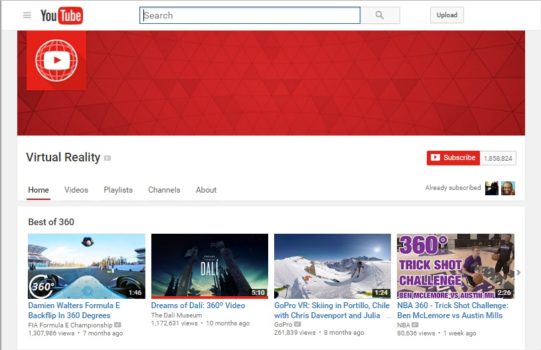
There are a lot of 360-degree videos out there and more arriving all the time. They seem to be a killer application for virtual reality. Even the lowest-cost mobile-based headsets — the kind you get for free in a cereal box — do a good job with 360-videos because they’re basically videos. And smartphones are now pretty good at playing videos.
So it’s no wonder that there are a lot of folks out there trying to become the YouTube of VR video. There’s Samsung VR (formerly “Milk VR”), Wevr, Littlstar, Jaunt VR, and many others.
One of them is Vrideo. Yesterday, the company announced that it was shutting down.
The problem with trying to be the YouTube of 360-degree videos is that there’s already a YouTube of 360-degree videos.
YouTube.
Their VR channel has nearly 2 million subscribers, and there are already more than a quarter-million videos uploaded to the platform in the 360 degree format.

Plus, if you pull up the YouTube virtual reality app, you don’t just get to watch all their 360-degree videos in the virtual reality environment. You can also watch all the regular videos they have, as if they were playing on a giant virtual movie screen.
So do we really need all the other VR video apps? Some of the special-purpose ones might survive. The New York Times has a VR app, for example, for folks who are aficionados of their documentaries.
And Netflix and Hulu both have VR apps as well, which is nice, because the videos you find on those platforms are different from the ones that turn up on YouTube.
But if I was looking for ways to invest in virtual reality, I might consider virtual reality studios that produce 360-degree content, or put my money directly into Google. But I wouldn’t be betting much on general-purpose 360-degree video apps.
- International singers gather on Alternate Metaverse Grid for first annual International Day - April 15, 2024
- OpenSim hits new land, user highs - April 15, 2024
- Wolf Territories rolls out speech-to-text to help the hearing impaired - April 15, 2024
